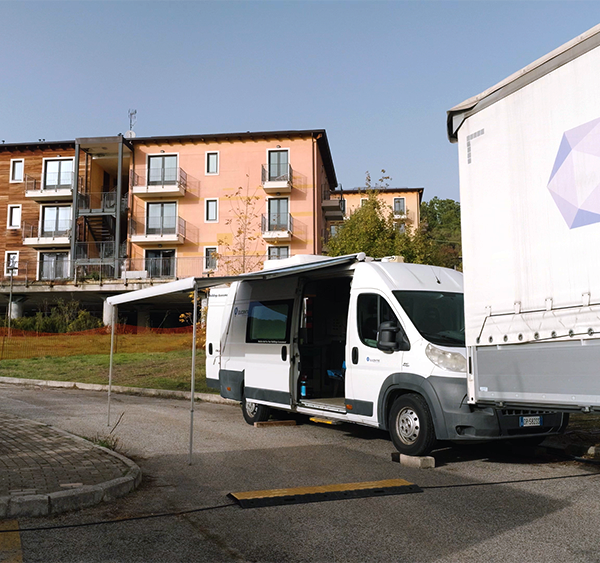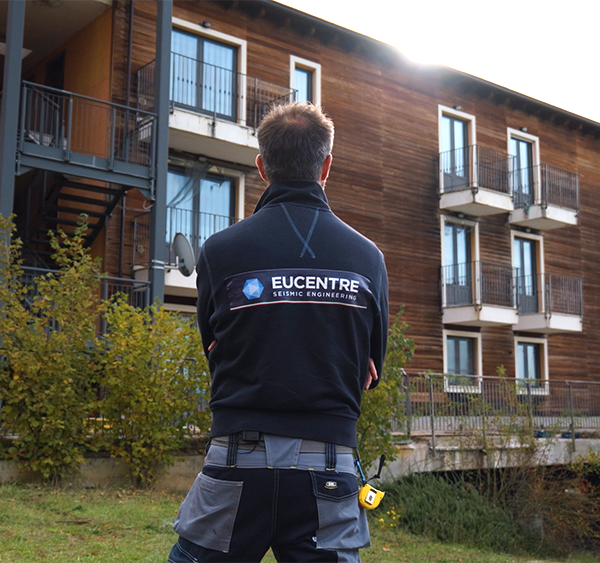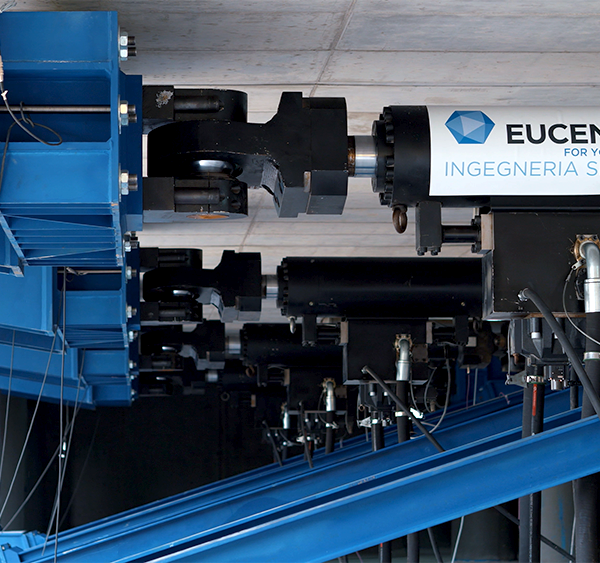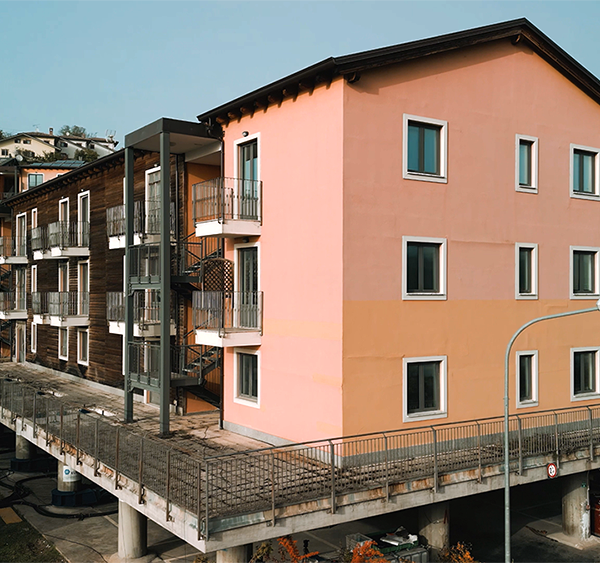The Eucentre Foundation, in collaboration with the University of Washington (Seattle, USA), the University of Berkeley (California, USA), and the Middle East Technical University (Ankara, Turkey), conducted an unprecedented experiment in October 2024 in Arischia, a hamlet in the municipality of L’Aquila. An entire existing building, weighing approximately 2000 tons, was subjected to a series of dynamic tests as part of the ERIES funded by the European Commission and coordinated by Scuola Universitaria Superiore IUSS di Pavia. These types of seismic tests, until now carried out mainly for small to medium-sized specimens on vibrating tables in experimental laboratories, were, for the first time, performed on an actual building, thus representing a significant step forward in research on seismic risk management and mitigation.
Seismic Isolation System: Structure and Functioning
The structural scheme of the C.A.S.E. Project consists, from bottom to top, of a reinforced concrete (AC) plate on the ground, a series of steel or AC columns, a seismic isolator on each column and, above, a second foundation plate, on which the building is built. The isolation system allows, in the event of a seismic event, the relative displacement between the columns and the upper foundation plate while maintaining the load-bearing capacity against vertical loads. This system significantly reduces the accelerations transmitted to the superstructure, thus protecting the building from structural damage.
Testing the seismic response of an actual building
A first test aimed to assess the seismic behaviour of an entire building, chosen from the 185 seismically isolated buildings constructed as part of the C.A.S.E. project in response to the L’Aquila earthquake of April 6th, 2009. The building was subjected to seismic stresses recorded in past events, applied directly to the upper foundation plate of the building, thus allowing the behaviour of the structure to be studied as if it were built in a non-seismically isolated configuration. The test result made it possible to collect essential data on the seismic response of this building, which did not suffer any particular structural damage despite the seismic actions exceeding those considered in its original design.
Dynamic test of the base isolation system
This second test involved a high-speed cyclic test involving all 32 sliding pendulum isolators installed under the building’s upper foundation plate to protect it from seismic stresses. The isolation system was then subjected to several load cycles in displacement of amplitude ±20 cm imposed on the upper foundation plate at a speed of around 30 cm/s. The test provided valuable and unique data on the ability of these devices to maintain adequate performance even 15 years after their installation.





